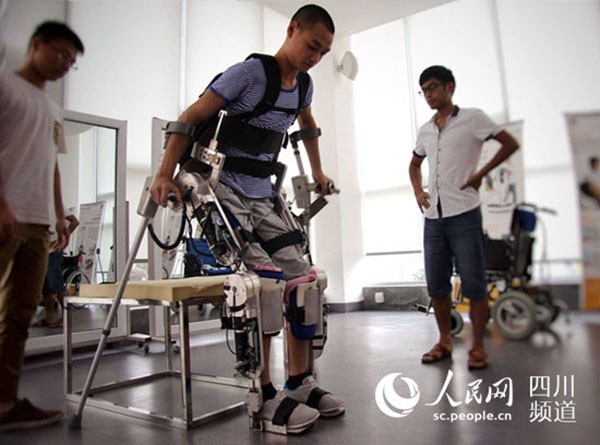A wearable exoskeleton that mimics natural knee movement developed by a team of engineers from University of Electronic Science and Technology of China (UESTC) boasts as one of the pioneering devices with such feat.
Weighing 19 kilograms and extending 1 meter vertically, the robotic leg has been engineered to simulate knee movements more naturally and advanced than previous models. It features more than 10 joints that are controlled by multiple sensors.
The research program at the robotics development center started in 2010 with the aim of developing a functioning wearable exoskeleton that could closely mimic natural joint movements.
The team's time frame from the conception of the idea to actually developing the robot is remarkable, especially in comparison with other scientists working with the same concept, according to the center's chief executive Hong Cheng.
Moreover, the invention has already attracted several companies willing to invest.
Aside from UESTC, many other universities in China have followed suit of establishing exoskeleton development centers.
The industry of developing exoskeleton suits has gained traction in the recent years with the goal of either surpassing physical limitations of human capabilities or helping physically handicapped patients.
Medical robots have also conducted more than half million operations in 800 hospitals worldwide.



























